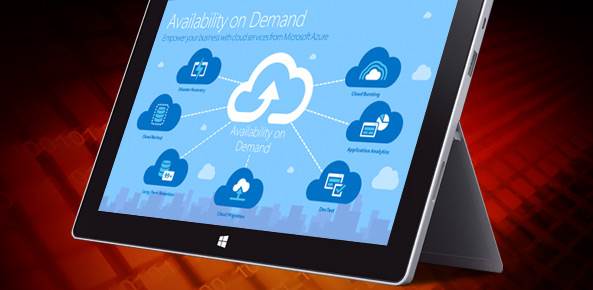Availability is not merely disaster recovery in the cloud — it’s the empowering connection between a data center and the cloud for protection and value creation. That’s what Microsoft Azure Product Marketing Group Manager Joel Ferman said when he announced new features for the Azure Backup service.
Microsoft now offers on-demand availability in Azure for both hybrid and heterogeneous environments. That lets organizations harness a nearly unlimited amount of compute and storage in the cloud for developing and testing cloud bursting, migration, reporting and analytics, recovery, backup and long-term data retention, Ferman said.
“Availability on Demand provides a seamless connection between your on-premises production systems and Azure or a secondary site, leveraging the replication capabilities of Azure Site Recovery and the data protection of Azure Backup,” Ferman explained.
Streamlining the Process
Practically speaking, this means enterprises can now offer both on-premises support and connect to Azure as well as replicate Hyper-V and now physical and VMware workloads. The end result: the ability to implement a true hybrid model that taps into what Microsoft is calling “compelling cloud economics and elasticity.”
Ferman promised a unified solution that does away with the challenges of managing multiple point solutions and a mix of cloud providers. Essentially, it makes no difference if an environment has Hyper-V, physical or VMware assets. Any which way, Availability on Demand handles it. All IT has to do is connect the data center to Azure with Availability on Demand.
Ferman ticked off six features of the new service. First, it eliminates the need to build and maintain a secondary DR site. It also saves time and money by eliminating tape backup and letting enterprises house up to 99 years of backup data in Azure. Third, it works to make it easier to migrate running Hyper-V, physical and VMware workloads into Azure to leverage the economics and elasticity of the cloud.
Enterprises can also run compute intensive reports or analytics on a replicated copy of on-premises assets in Azure without impacting production workloads. Fifth, it lets firms burst into the cloud and run on-premises workloads in Azure, with larger compute templates when needed. Finally, it creates multi-tier development environments in Azure with a few clicks — even letting companies replicate live production data to their dev/test environments to keep those environments in near real-time sync.
The Only Surprise
We asked Rob Enderle, principal analyst at the Enderle Group, for his thoughts on the new product. He told us backup/recovery was one of the first services to be offered in what eventually folks called the cloud.
“Mostly this was for individuals and small businesses through services like Mozy (an online backup service). It is kind of a natural place for any cloud provider to go and with the massive reduction in the cost of storage, cloud services can provide a lot of capacity for an increasingly smaller fee,” Enderle said.
“Now firms in particular are interested in services that are wrapped with enterprise-class protection and features, making Azure, which has both, an ideal place for a new offering focused on business,” he said. “The only surprise here is that it took so long for Microsoft to ramp up this service, the opportunity has been there for years.”







